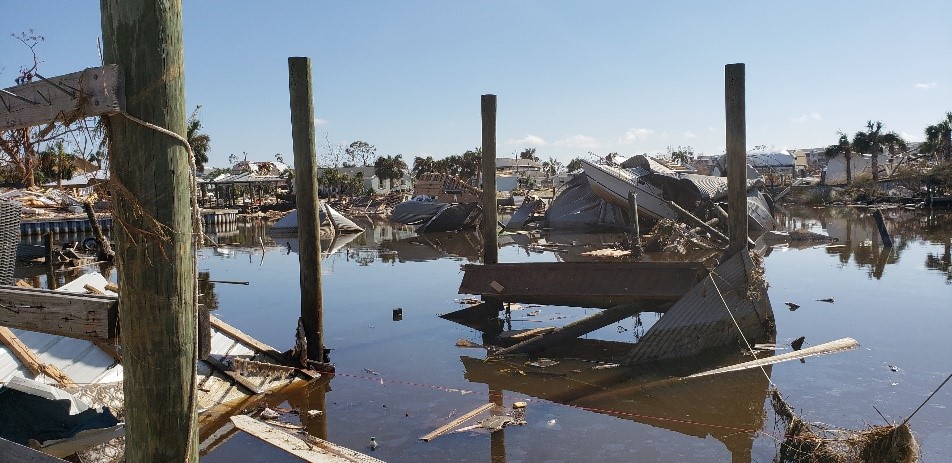The timing was all wrong — we do not get storms this late in October but apparently no one told mother nature. I have been doing this storm thing as a researcher, coastal resident and insurance guy for so long that I started putting up the tarps and pulling the gas out of the generators after October 4th. I just did not think we would get storm this late, and neither did many others.
Intensity
Hurricane Michael was an anomaly—or maybe an indicator of things to come. When a storm continues to gain strength and drop millibars as it approaches land, we have something new on our hands. Most storms die off quickly upon interacting with the great friction that land is. Not Michael, it roared and churned delivering a 13-foot storm surge over Mexico Beach and severe wind damage all the way up to Georgia. Just one trip down Interstate 10 between Pensacola and Tallahassee will let you know that this hurricane had staying power.
To read the Cat 5 Hurricane Michael full report issued April 19, 2019 by the National Hurricane Center, NWS and NOAA.
Severity of Damage
Different was the damage profile and the capacity of the homes to take the wind. Damage like this has not been seen in a couple of decades in anything other than a tornado and Panama City was not the town to take it. Many of our structures here are built to different standards. The old Southern Building Code allowed spaced plywood, non-blocked gable end walls, fiberboard sheathing and a lack of solid load path connectors from the slab to the trusses. I understand Andrew was this bad, but I just missed that go around down in Miami-Dade.
Population
I have pulled the numbers from the Florida Department of Insurance Regulation that keeps track of the number of claims by type and resolution. It is hard to fathom that in Hurricane Michael there were only 95,000 claims while Irma had 850,000 claims (see charts below). There are more open Irma claims than Michael per the books.
Hurricane Irma Insurance Claims
The differences between the two charts above is also what is different about this event compared with others.
This tale of two storms shows what a 130-mph event hitting the least populated portion of South Florida, the southwest corner of the state, and then mainlining up I-75 to Georgia does, compared to a 150-mph head-on hit does to a beach town and a whole lot of pine forest behind it.
Summary
Hurricane Michael, if we can get through these current tight spots, will end up being a catalyst for Panama City and much of the rest of the community. The number of homes that will be rebuilt to code, the amount of insurance company money and construction jobs, and improved infrastructure, will be the silver lining.
This can also be seen in Pensacola where Ivan damaged, and FEMA helped move, the wastewater treatment facility with the leadership at Baskerville Donovan. This can also be seen on the Mississippi Gulf Coast, along Hwy 90, from Ocean Springs to Pass Christian and Waveland where rebuilding has taken place out of the flood zone and and is now wind resistant.
Like Hemingway said in Farewell to Arms, “The world breaks everyone and afterward many are strong at the broken places.”
